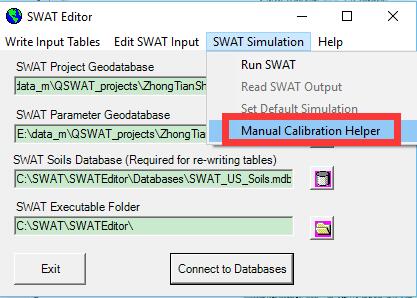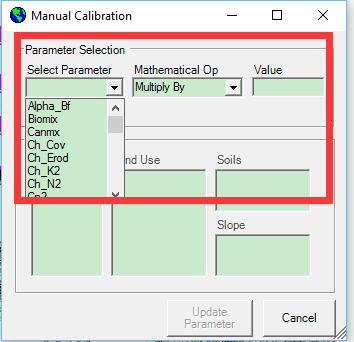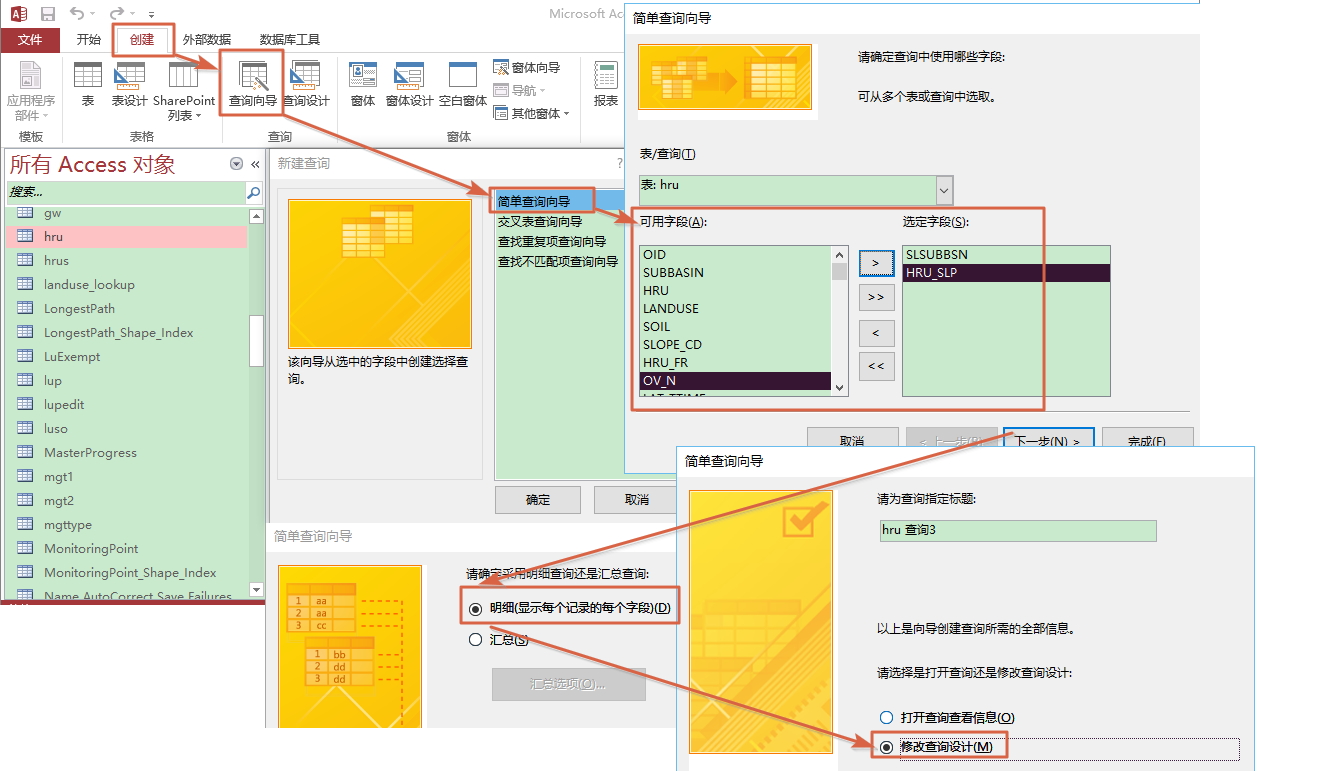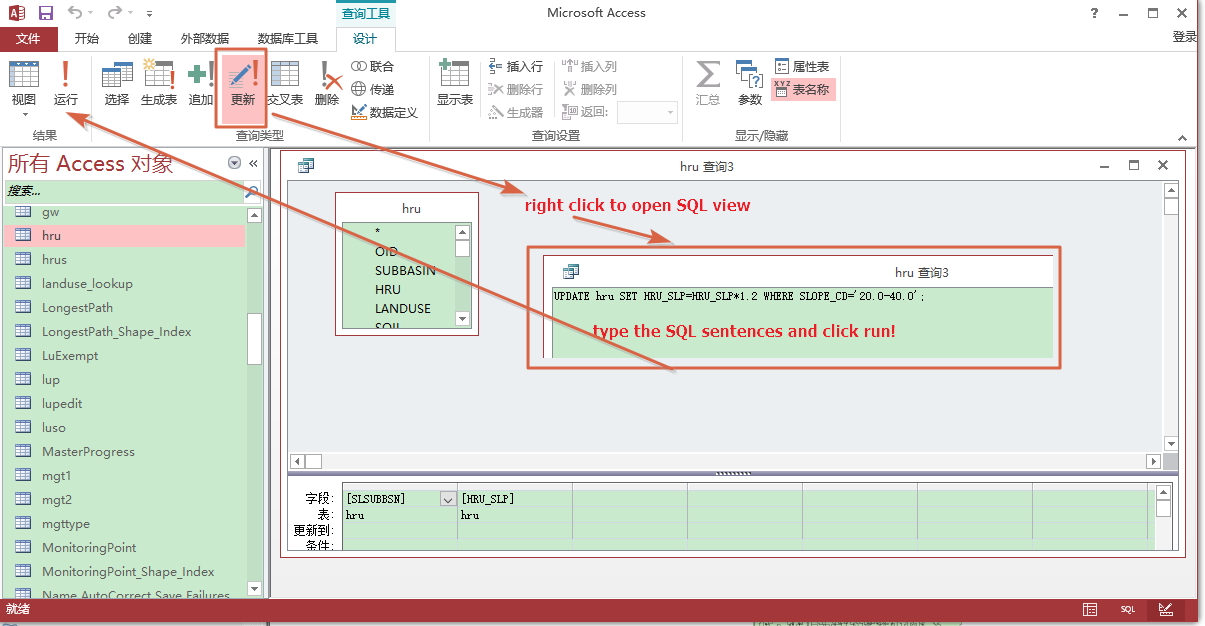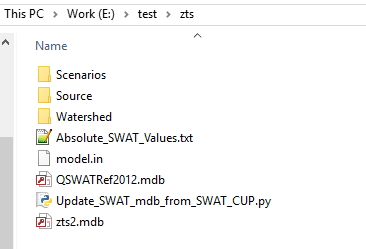Automatically write Calibrated parameters by SWAT-CUP (model.in) back to SWAT Access database (.mdb)1 Requirement analysisArcSWAT and QSWAT is the most two popular user interface for SWAT model users. SWAT-CUP has been widespreadly used to calibrate SWAT model which coupled SUFI2, PSO, GLUE, ParaSol, and MCMC procedures. Most users like to work with user-friendly interfaces (i.e., ArcSWAT and QSWAT, with SWATEditor inside) other than original SWAT input and output files (i.e., the TxtInOut folder). Because the latter has a large number of files and is not easy to handle. So, when the calibration is done by SWAT-CUP, users have a desire to write the calibrated parameters back to SWAT database (i.e., <project name>.mdb), such as subjects in Google group, Copy Calibrated parameters back to Arc SWAT model? and Write back the parameters in arc swat?. Usually, we have two methods to accomplish this requirement. 1.1 Manual calibration in SWATEditorAfter the basis SWAT model is built, users may manual calibrate their model by modifying parameters using Manual Calibration Helper in SWATEditor (such as Fig.1 and Fig.2).
Fig.1 Manual calibration Helper in SWATEditor
Fig.2 Parameter selection and modification GUI in SWATEditor Besides the easy to learn and convenient, however, there are some drawbacks of this method:
1.2 Manually update the Access databaseIn order to overcome some of the drawbacks in the former method, users can use some simple SQL sentences to update the SWAT database manually. The usual steps is as follows:
Fig.3 Build a new query layout in Access
Fig.4 Tyep SQL sentences and run update Obviously, some advantage can be highlighted, such as:
By contrast, some drawbacks are also exposed:
1.3 Can it be automated?After reviewing the common used methods above, the essential tips used to write the calibrated parameters back to SWAT database can be drawn as follows:
Therefore, if we,
it will be automated! 2 Implementation2.1 OverviewThis automatic program is written in python and requires pyodbc package. 2.2 Functions2.2.1 paraIdentifier classFollowed the “Parameterization in SWAT-CUP” in SWAT-CUP manual.pdf, I designed a class to manage the calibrated parameter scheme. BE CAUTION: Currently, only fundamental function is implemented, Specification of Management Parameters, Specification of Crop Parameters, Specification of Pesticide Parameters, and Specification of Precipitation and Temperature Parameters are not considered! If your SWAT model need to update fert.dat, pest.dat, plant.dat, septwq.dat, til.dat, and urban.dat, it is highly recommended that copy these modified files in SWAT-CUP to your TxtInOut folder directly!
class paraIdentifier:
### the parameter identifier format proposed by SWAT-CUP
### x__<parname>.<ext>__<hydrogrp>__<soltext>__<landuse>__<subbsn>__<slope>
def __init__(self):
self.name = '' ### SWAT parameter name as it appears in the Absolute_SWAT_Values.txt
self.ext = '' ### SWAT file extention code or table name in SWAT database, e.g., sol, hru, rte, etc.
self.hydrogrp = [] ### (Optional) soil hydrological group ('A', 'B', 'C', or 'D')
self.soltext = [] ### (Optional) soil texture
self.landuse = [] ### (Optional) landuse
self.subbsn = [] ### (Optional) subbasin number(s)
self.slope = [] ### (Optional) slope, e.g., '0-20'
self.indent = '' ### identifier code, v means replaced, a means added, r means multiplied.
self.value = 9999 ###
self.lyr = [] ### (Optional) soil layer number(s), e.g., 1,2,4-6 means 1,2,4,5,6
2.2.2 Workflow functionsCorresponding to the essential tips in section 1.3, I designed four function:
2.3 Download and ExecutionThe script can be forked and downloaded at Github-crazyzlj-python. To run the script, you should have:
Usage:
// .bsn v__SPCON.bsn 0.003 // .chm v__SOL_NO3(1).chm 27 // .gw v__ALPHA_BF.gw 0.95 // .hru r__OV_N.hru -0.40 r__SLSUBBSN.hru__________40.0-9999 0.60 // .mgt1 r__BIOMIX.mgt -0.13 // .pnd r__PND_VOL.pnd -0.15 // .rte v__CH_ERODMO().rte 0.1 // .sol r__SOL_K(1).sol 0.95 // .swq r__RS4.swq 0.08 // .wwq r__AI1.wwq 0.06
Fig.5 Files list
SWAT_PROJ_NAME = 'zts2'
Fig.6 Example output of one updated parameter 3 ConclusionCurrently, I just accomplished the basic function of writing calibrated parameters from SWAT-CUP back to SWAT database. That means, this first beta version isincomplete and imperfect. Any advises or bugs will be greatly welcome! « Back |

